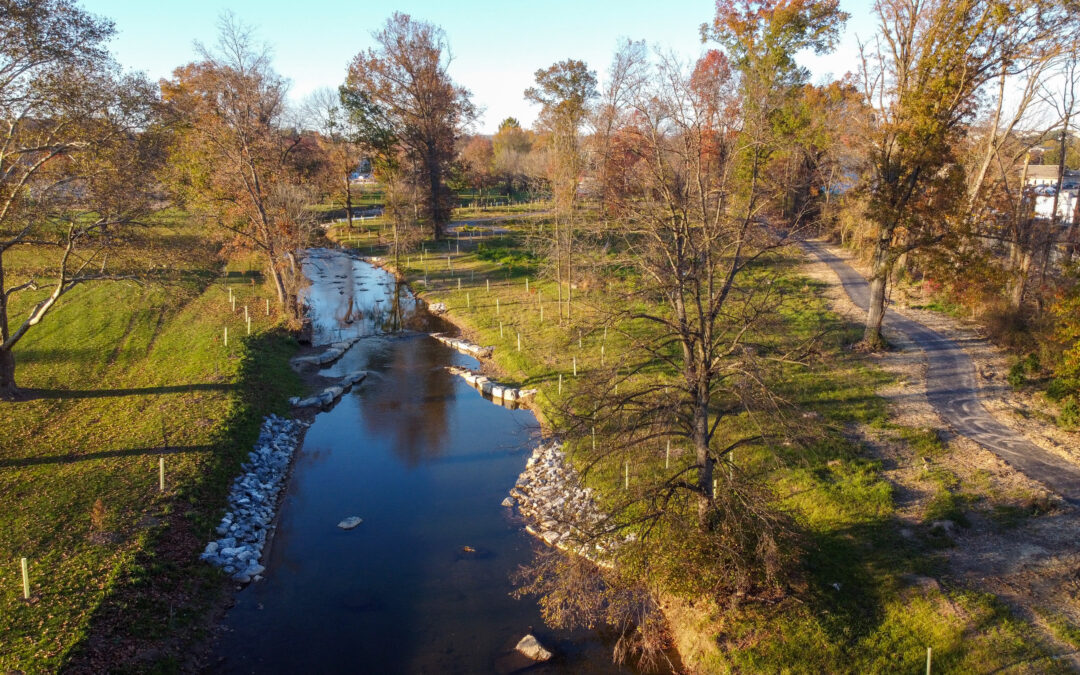As the saying goes, water is life. Protecting our waterways doesn’t just benefit humans — it’s essential for the survival of plants, animals, and our environment as well.
Over the years, land development and agricultural practices have harmed or destroyed many aquatic ecosystems, with far-reaching consequences for aquatic organisms and water quality. Stream restoration can help reverse the damage.
There are five ways stream restoration improves the health of aquatic ecosystems. Let’s take a closer look at each one.
1. Restoring Physical Habitats
Changes to the structure of a stream affects the natural habitats of aquatic plants and animals. When developers and farmers cut down trees along stream banks and straighten stream channels, it has a significant impact on the ecosystem. Not only does it decrease the shade along the banks and increase the water temperature (making it harder for some species to survive), but it also leads to a faster flow of water, causing soil erosion.
Stream restoration can add or enhance in-stream structures to help remedy this. Building grade control structures helps to slow the flow of water and creates a habitat for aquatic life to flourish. Methods that can help restore habitat and reduce erosion include adding step pools, log-framed deflectors, mud sills, and root wads to a stream.
2. Enhancing Water Quality
One of the most significant benefits of stream restoration is the improvement of water quality. Rehabilitating the natural form of a stream through stabilized banks decreases erosion and helps to prevent excess sediment from entering the water. In areas where erosion is especially severe, stream bank grading and adding imbricated riprap prevents soil from washing into waterways, especially during heavy storms. These methods, in turn, reduce turbidity and improve the water quality for the organisms that live within.
Another water quality issue is that runoff from farms and paved surfaces often introduce pesticides, fertilizers, and other contaminants to streams. Creating vegetated buffer zones helps to filter these out and maintain cleaner waterways.
3. Promoting Natural Stream Processes
Streams naturally carry water and sediment from areas of high elevation to lakes, estuaries, and oceans downstream. As the water flows, soil, gravel, rocks, and tree roots filter out impurities, resulting in cleaner water. However, human interventions such as dams and stream diversions can decrease the natural flow and interfere with this process. Stream restoration projects that improve the flow of water enable waterways to do this job more effectively once again.
4. Restoring Riparian Zones
A stream relies on natural vegetation along its banks to prevent erosion, create natural habitats for plants and animals, provide a food source for organisms, and supply shade, which keeps its waters cool. When these areas are destroyed through development, construction, agriculture, and local contaminants, restoration is critical. Solutions can include planting native vegetation, removing invasive plant species, and adding coir logs along a stream’s banks. In agricultural areas, installing fencing to keep livestock away can help too, as the animals eat and trample native vegetation, leading to the degradation of stream banks.
5. Increasing Habitat Connectivity
Patches of different habitats throughout a stream provide food, shelter, and other resources for aquatic life. Fish, for example, move from patch to patch in search of food, or to migrate and find a mate. However, destruction of habitat and changes in a stream’s current can prevent this movement. This impacts species populations and lessens biodiversity.
Stream restoration can restore habitats and the pathways between them. Methods such as log cross vanes and J hooks create pools for aquatic animals to thrive, and removing dams or other blockages can restore migration routes.
Stream Restoration Experts
When streams are damaged, intervention is necessary to restore their habitats, water quality, and natural processes. A variety of methods can improve their overall function and ecological health, but how do you know which are best? Flyway Excavating can help.
If you’re hoping to start a stream restoration project, contact us. We’ll evaluate your circumstances and determine the best course of action for restoring your stream to its natural state. We are passionate about improving our local streams, because water is life.
